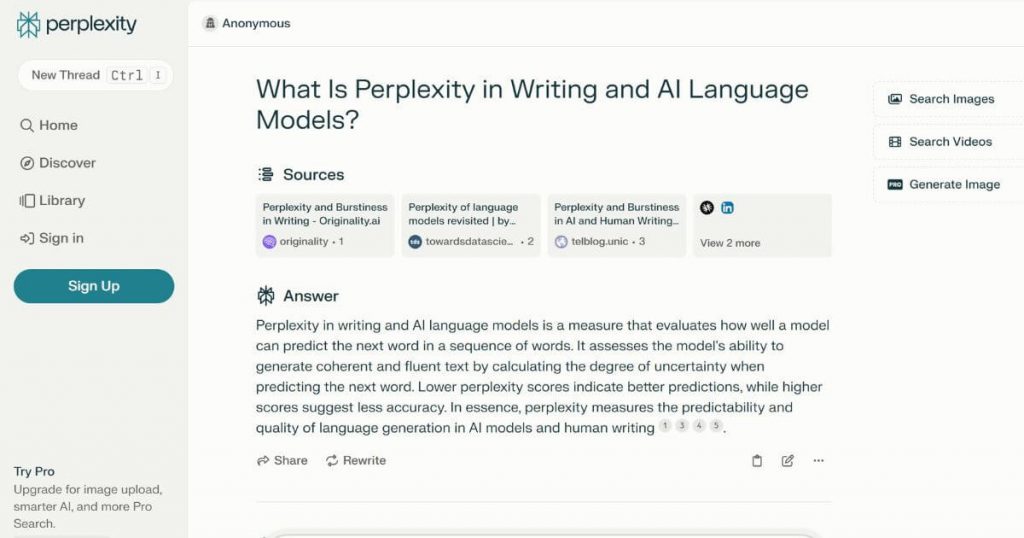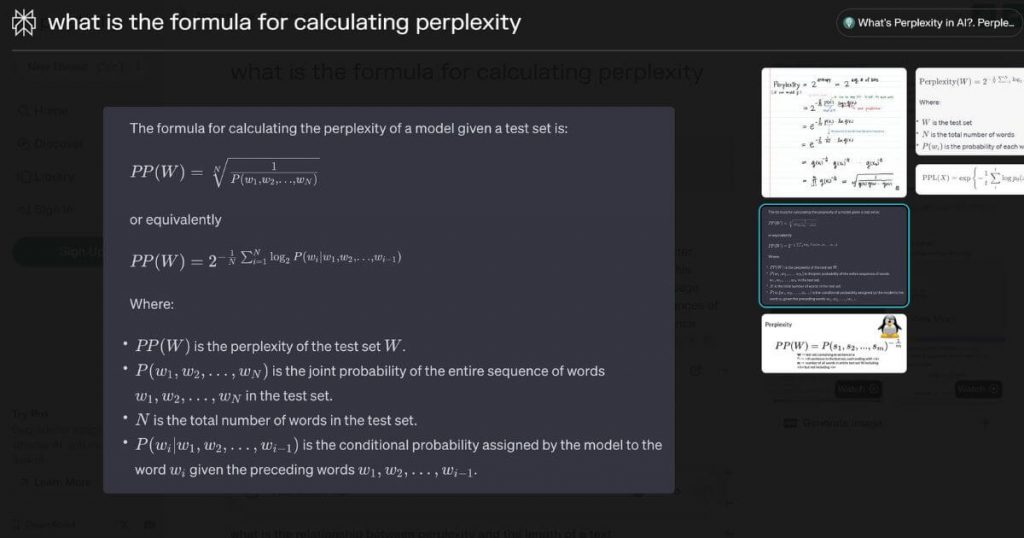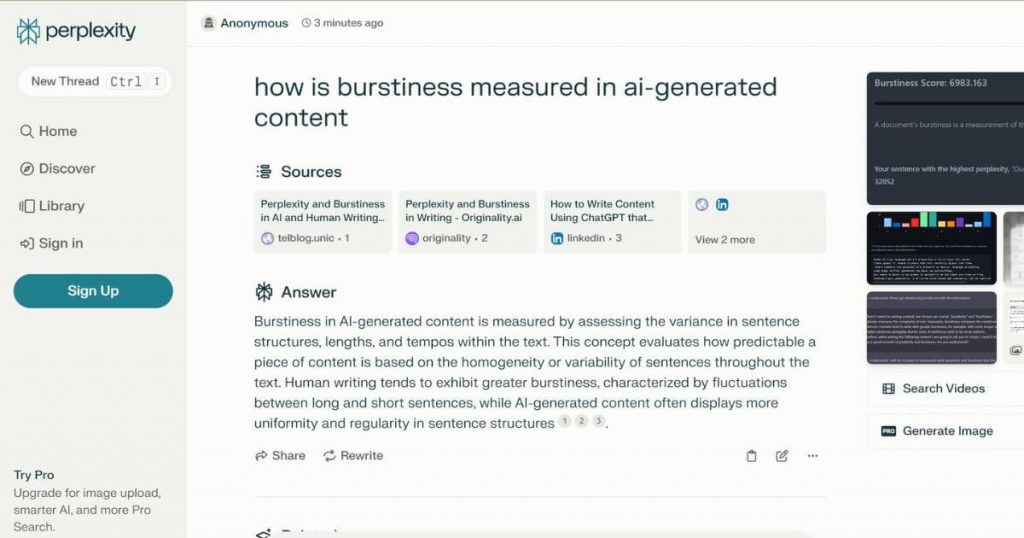Writing with soul and sparkle is no small feat, a truth known to anyone who’s tried their hand at weaving stories. Like countless writers before me, I’ve grappled with finding that sweet spot—knowing when the writing sings and when it simply falls flat.
Along my journey, I latched onto the magic of “perplexity” and “burstiness,” two concepts that have revolutionized my approach to crafting sentences that dance off the page. So, let’s unpack these ideas.
By doing so, we’ll not only enhance our linguistic flair but also understand what makes artificial intelligence (AI)-generated text either stumble or stand out.
Understanding Perplexity and Burstiness [Key Takeaways]
- Perplexity measures how well an AI predicts the next word, with lower scores showing smoother language that sounds more human.
- Burstiness adds a lively rhythm to writing, creating exciting changes in pace that keep readers engaged.
- Improving burstiness and perplexity in AI models makes chatbots and virtual assistants seem less robotic and more relatable.
- Balancing low perplexity with the right amount of burstiness is key for captivating content, whether it’s created by people or AI.
- As technology advances, using both perplexity and burstiness effectively will lead to more natural collaborations between humans and AIs in storytelling.
What Is Perplexity in Writing and AI Language Models?

Now that we’ve set the stage with an introduction to the core ideas, let’s dive deeper into perplexity and its role in writing and AI language models. Perplexity serves as a metric to gauge how well a model can predict what comes next in a sentence.
Think of it like measuring how “perplexed” or surprised the model is when it encounters new words within different contexts. For us humans, low perplexity indicates that text flows naturally, just as if someone were speaking directly to us; each word fits snugly based on our understanding of language.
In the realm of artificial intelligence, though, creating AI-generated content with low perplexity is trickier. These AI tools strive to mimic human speech but often stumble because they lack our nuanced grasp of context and cultural subtleties.
That’s why I’m continuously tweaking their algorithms. It helps them get better at serving up sentences that sound less robotic and more like something one person would say to another. The quest for natural language processing excellence means constantly adjusting these complex models so they can weave words together with grace and relevance.
Exploring the Concept of Burstiness in Narrative Structuring

Let’s shift gears to burstiness, another key element that brings stories and AI-generated content to life. Burstiness is all about the rhythm of a narrative. It’s what keeps readers on their toes.
Just like in music, where a sudden drumbeat can grab our attention, burstiness in writing introduces moments that spike interest or provide a flood of details. It’s like an unpredictable pattern within your story. Sometimes you have long stretches of calm, followed by rapid torrents of action or information.
This dynamic texture gives narratives a human-like quality because real conversations and thoughts often come in bursts rather than steady streams. In AI language models, designing algorithms that replicate this natural ebb and flow is challenging but crucial for creating engaging content.
It’s not simply about throwing words together. It requires crafting sentences with intentionality so they jump off the page at just the right moment. As I tweak my own work or evaluate AI output for burstiness, my goal is always clear: create pieces where every sentence has the opportunity to spark curiosity or ramp up excitement.
The Interaction Between Perplexity and Burstiness in Writing
Burstiness keeps you on the edge of your seat, but it’s the dance with perplexity that really shapes our writing. Think of it like a pendulum swinging between clarity and surprise.
Low perplexity ensures that my content is understandable and follows a logical thread, which makes me seem reliable to you as a reader. If I get too complex or unpredictable, you might lose track of what I’m saying. That’s why we aim for lower perplexity—so my words are easy to follow.
Now, let’s spice things up with burstiness by throwing in unexpected twists and turns that make reading feel like an adventure. This injects energy into AI-generated text or any creative piece, captivating attention without causing confusion.
Mastering this balance isn’t just about keeping readers interested. It also trains generative AI models to produce more human-like prose. Perfecting the interplay between these two elements is key to engaging content creation, whether by human writers or their AI counterparts—keeping the message clear while delivering an exhilarating read.
The Role of Perplexity and Burstiness in AI Training
Perplexity measures how well an AI system can predict the next word in a sentence, acting as a litmus test for its language understanding. As AI models are refined, avoiding higher perplexity is the target. It tells me the machine is getting better at mimicking human-like speech patterns and improving fluency in generated content. Striving for lower perplexity means pushing AIs toward more accurate and coherent responses, mirroring the natural flow of human conversation.

On the other hand, integrating burstiness into training challenges these AI systems to not just form coherent sentences but also infuse them with engaging and varied information. It’s about striking that fine balance: instilling unpredictability without sacrificing coherence.

This keeps conversations lively and less robotic, which is exactly what we need when aiming to make AI chatbots or virtual assistants feel more relatable. By juggling both concepts during training phases, I help create engaging content that resonates with users while ensuring that interactions are smooth and natural-sounding.
There’s another interesting pair when it comes to artificial intelligence and accuracy—learn more about hallucination and grounding in AI.
The Impact of Perplexity and Burstiness on AI-Generated Content
AI-generated content often wrestles with the challenge of perplexity, which reflects how well a model can predict what word comes next. If an AI like ChatGPT produces high-perplexity text, it means the writing may feel disjointed or unexpected to readers.
I’m always on the lookout for this in my work because keeping perplexity low is key to creating smooth and understandable content that feels natural. This goal isn’t just about impressing humans. Lower perplexity ensures that AI models perform better by staying contextually relevant and maintaining coherence through each sentence they generate.
On the other side of the coin, burstiness plays its own critical role in spicing up AI content. It’s about adding variety. Think of it as rhythm in music or tempo changes in a dance routine.
Including bursts of complexity within otherwise straightforward text keeps you from dozing off. Machine learning algorithms are getting better at injecting these dynamic shifts into their outputs, making them more engaging for readers like us who crave something beyond monotone robots churning out words.
Conclusion
As we’ve unraveled the mystery behind perplexity and burstiness in writing, it’s clear their roles are pivotal in both human and AI writing. We’re stepping into an era where fine-tuning these elements through perplexity and burstiness prompts could mean the difference between robotic text and content that resonates with readers.
My journey through this maze of concepts has armed me with powerful tools to craft more engaging narratives, whether by hand or through keystrokes guiding AI. It’s thrilling to imagine how this knowledge will shape our written words as we advance toward a future rich with seamless human-AI collaboration in storytelling.
Check out my ultimate guide to AI terms next.
FAQ
What does perplexity mean in AI language models?
Perplexity in AI measures how well a language model predicts a sample of text. If the model has high perplexity, it’s often more confused by the words and less certain about what comes next.
Why is low perplexity important for evaluating AI?
When an AI shows lower perplexity, it indicates that the model understands the text better, making smarter predictions about what word should come next.
What is burstiness in writing?
Burstiness refers to variations in sentence length and complexity within writing or speech. It makes content engaging because it mixes up short and simple sentences with longer, more complex ones.
How do concepts of perplexity and burstiness impact my content?
Understanding burstiness and perplexity prompts helps you improve your content. Aim for lower perplexity to show clear ideas, while using burstiness to keep readers interested with varied sentence structures.
Can AI help improve the burstiness of writing?
Yes! Prompting an AI like ChatGPT with requests can unleash its power to mix things up by adding shorter or longer sentences to your material, enhancing engagement. Using the right prompts is an important aspect of how to increase perplexity and burstiness in your content.



